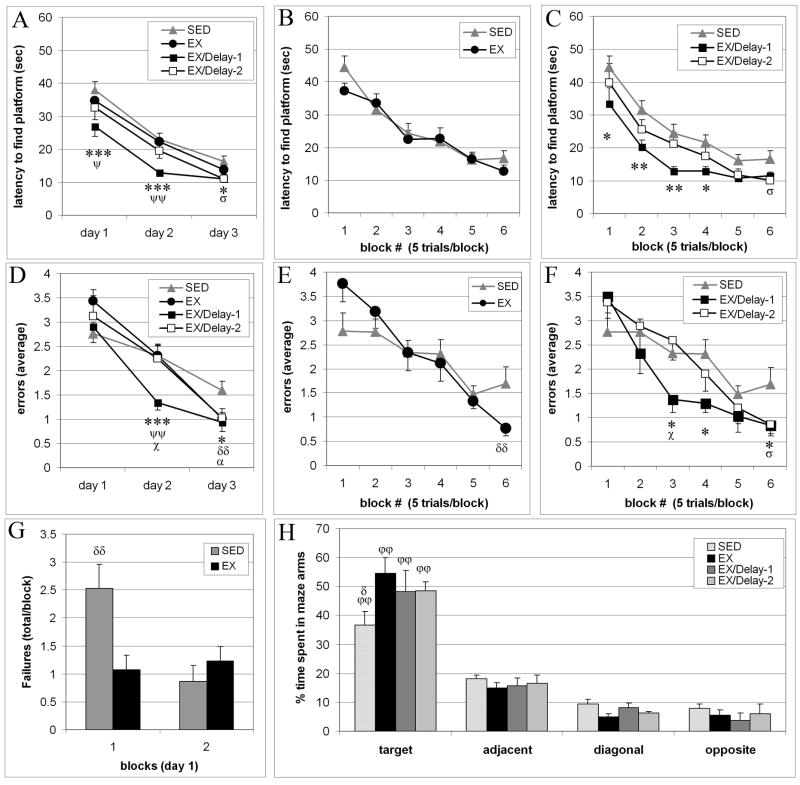Figure 1.
Exercise effects on acquisition and retention of the radial water maze. Latency and errors by day (A,D) or by blocks of 5 trials (B,C, E, F) after 3 weeks of voluntary wheel running exercise with no delay (EX), a 1-week delay (EX/delay-1) or a 2-week delay (EX/delay-2) between exercise and cognitive training. Latency or errors by day (averaged over 2 blocks of 5 trials per day) reveals that animals with exercise exposure learn the task faster than sedentary animals (A, D). Latency and errors by block of 5 trials (B,E) reveals that EX and SED groups have similar latencies to find the platform (B) while the EX group ultimately makes fewer errors on block 6 (E). Latency and errors by block of 5 trials (C, F) reveals that fastest acquisition was observed when a 1-week delay was introduced between exercise and cognitive training while after 2 weeks delay, acquisition speed was intermediate between the performance of SED and EX/Delay-1 groups. Failure to find the escape platform was more frequent in SED than EX animals in block 1 of training (G). Probe trial performance reveals that all animals learned the task, spending more time in the target arm where the platform had been located, relative to the other maze arms (H). Exercised animals showed greater preference for the target arm relative to SED animals, with strongest memory in animals with no delay between exercise and cognitive training. Percentage of time in each arm was calculated as the ratio of “time in arm” divided by “time spent in all arms”. All data are averages ± sem. (SED vs EX: δ p ≤ 0.05, δδ p ≤ 0.01. SED vs EX/Delay-1: *p ≤ 0.05, **p ≤ 0.01, ***p ≤ 0.005. SED vs EX/Delay-2: σ p ≤ 0.05. EX vs EX/Delay-1: Ψp ≤ 0.05, ΨΨp ≤ 0.01. EX/Delay-1 vs EX/Delay-2: χp ≤ 0.05. Target arm vs non-target arms: ϕϕ p ≤ 0.0001)).

